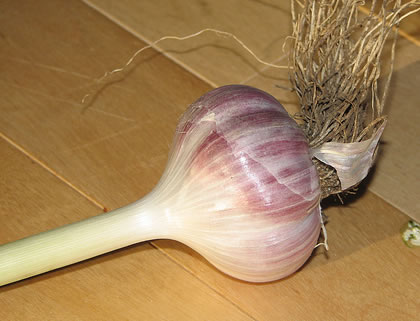Garlic contains almost 30 medicinally active compounds. Its healing powers may even outshine some of today’s common drugs, such as certain antibiotics. It wasn’t until recently that studies began to identify garlic’s biochemical makeup.
In the 1940’s scientist identified three important compounds in garlic: aliin, allinase and allicin. Aliin is the sulfur containing compound in raw garlic. Allinase is an enzyme that interacts with aliin and other garlic compounds to form allicin. Allicin is the main ingredient that gives garlic its odor, taste and powerful medicinal properties.
The allicin in garlic helps fight bacteria, viruses, molds, yeasts and aids in the prevention of many serious diseases. In fact, garlic has long been used as an antibiotic, since before the time of gladiators, to combat infection.
Allicin is the product of a chemical reaction that takes place when garlic is chopped or crushed. This is why it’s important to cut, chop or crush fresh garlic to obtain the desired medicinal effects. But be warned: nearly half of its potency degrades within the first 3 hours of release (at room temperature) and is almost completely lost after 24 hours. At higher temperatures (when cooking garlic), allicin will completely breakdown.
The breakdown of allicin, however, produces even more compounds. And more recent studies have extended the list of garlic compounds to well over 400, almost 30 of which are known to have medicinal and healing benefits.
